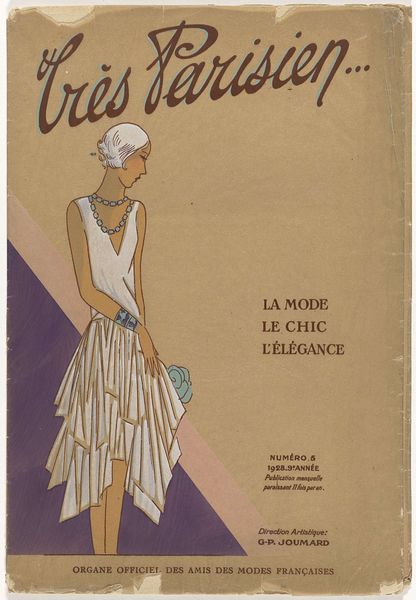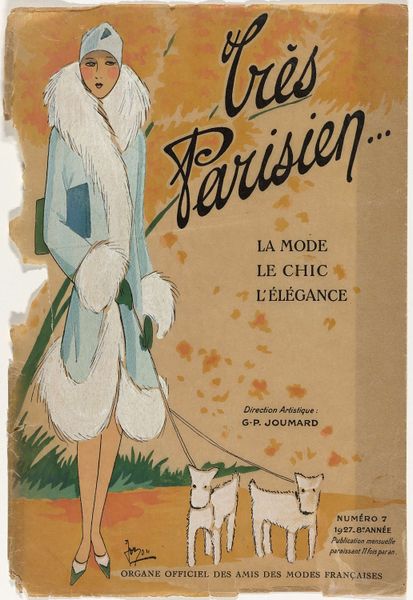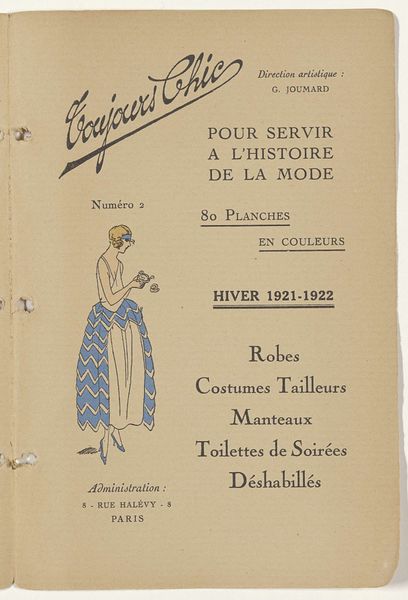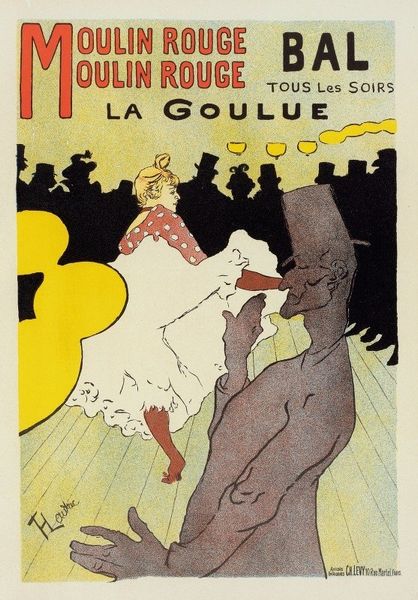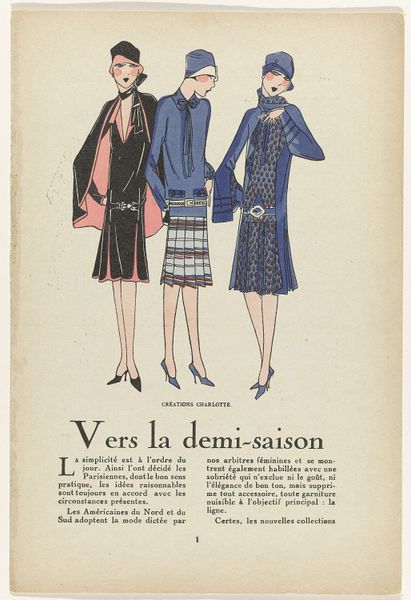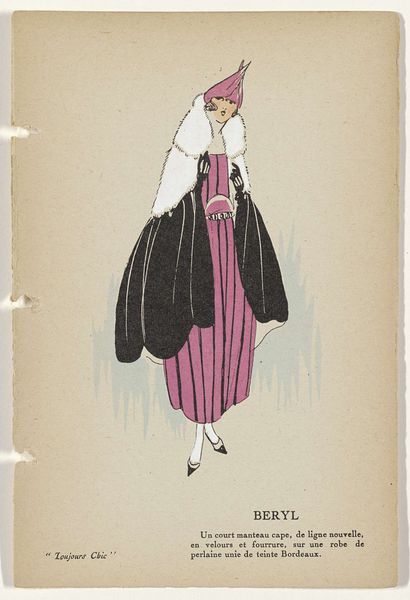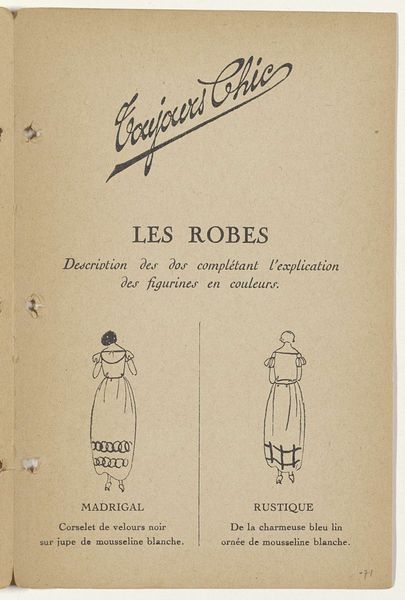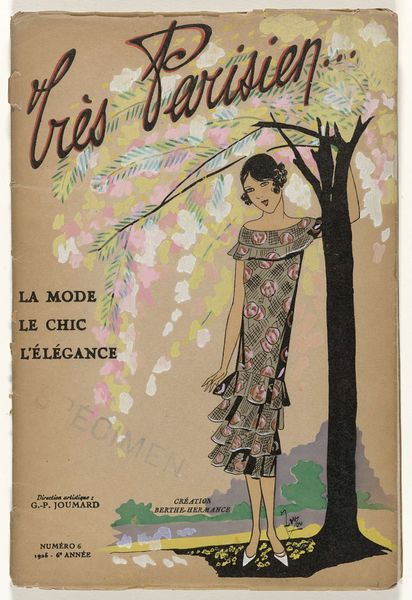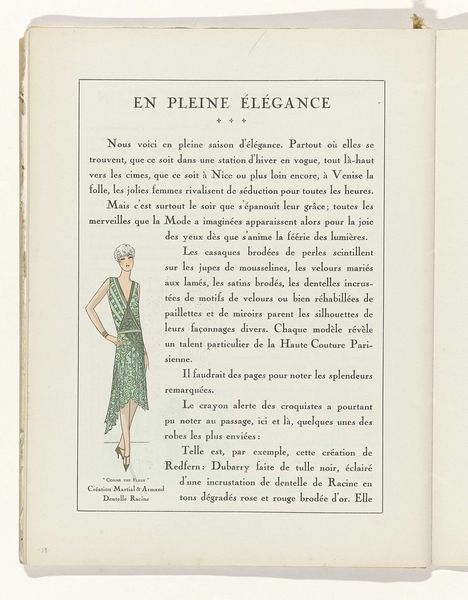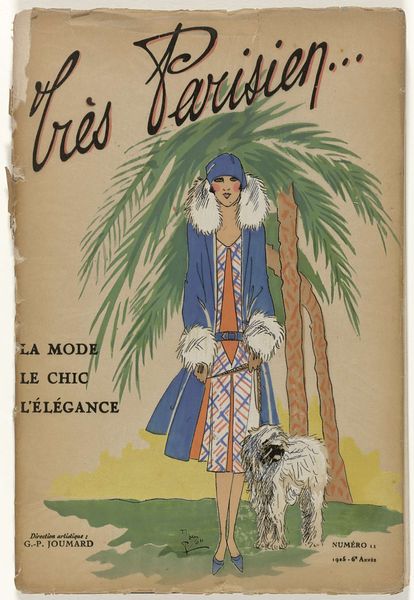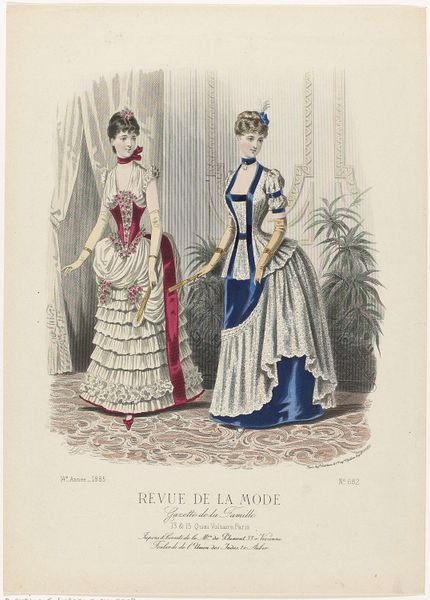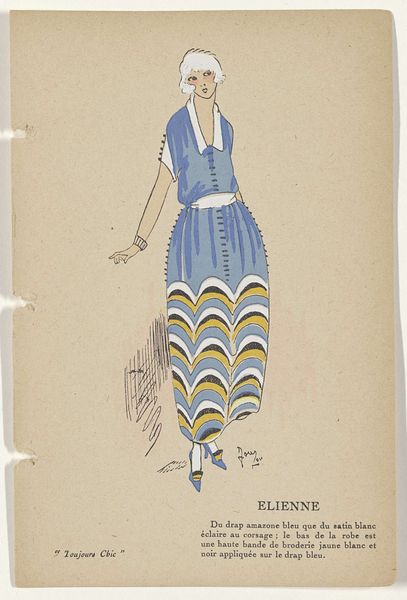
Dimensions: height 180 mm, width 120 mm
Copyright: Rijks Museum: Open Domain
Editor: This ink and watercolour drawing, "Toujours Chic Les Tailleurs et Les Manteaux Hiver 1921-1922" by G-P. Joumard, feels incredibly evocative of its time. It's like a glimpse into a fashionable Parisian world, but there's also something a little detached about it. What do you see in this piece beyond its immediate charm? Curator: I see a carefully constructed image of bourgeois femininity in the aftermath of the First World War. This drawing, as a fashion plate, wasn’t simply about selling clothes. It performed a crucial role in reshaping the image of women and their roles in a rapidly changing society. Consider the bold lines of the outfit – what might they represent? Editor: Perhaps a sense of newfound freedom and modernity? It definitely feels less restrictive than earlier styles. Curator: Precisely! The relatively shorter skirt, the streamlined silhouette – these were visual signifiers of women entering the workforce, demanding greater autonomy. It’s fascinating how fashion becomes a battleground for defining and negotiating these shifting social roles. And what about the title itself, "Toujours Chic"? Who is it speaking to, and what anxieties might it be attempting to soothe? Editor: I hadn’t thought about the "always chic" aspect in that way. Maybe it’s reassuring the upper class that even amid societal changes, they can maintain their status through fashion? Curator: Exactly. It's a quiet assertion of privilege, a way of marking oneself as belonging to a certain social stratum. By buying into this "chic," women could participate in a system that simultaneously offered liberation and reinforced existing power structures. Where do you see that tension most clearly visualized? Editor: Probably in the juxtaposition of the almost rebellious clothing with the poised, somewhat distant figure. There's progress, but within limits, maybe? I never thought a fashion drawing could be so loaded with meaning! Curator: It's a perfect example of how art, even seemingly commercial art, is deeply embedded in its historical and social context. Analyzing it reveals so much about the complexities of gender, class, and the evolving role of women in the 1920s. Editor: I'll definitely be looking at fashion illustration differently now. Thanks for unpacking all those layers!
Comments
No comments
Be the first to comment and join the conversation on the ultimate creative platform.

